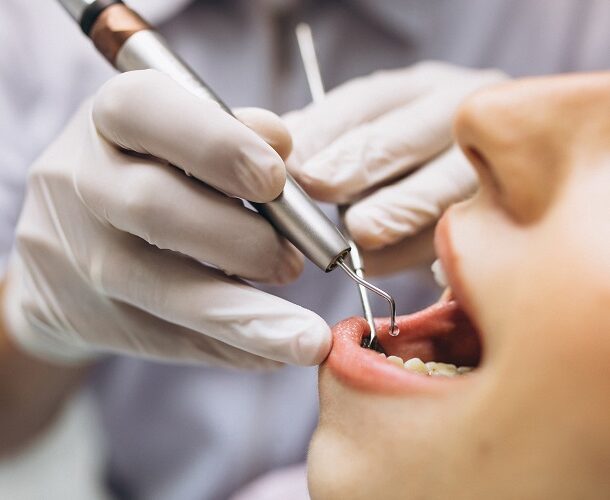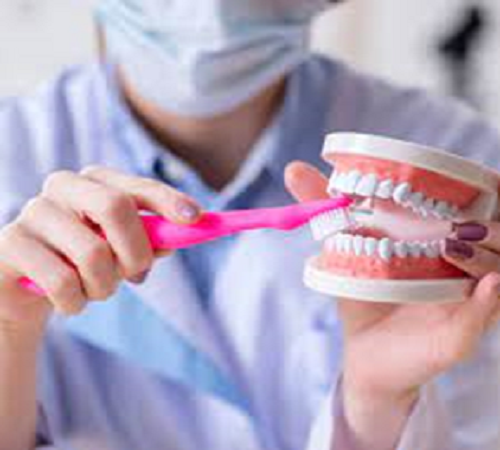We often avoid dental surgical procedures as it seems scary so we postpone or avoid dental visits. This happens because we often lack knowledge about surgical procedures and why it is necessary for us to go through the same. Tooth extraction procedures are classified as simple (non-surgical) extraction and surgical tooth extraction. The surgical extraction procedure includes raising a gingival flap using a surgical blade, also removing a part of the bone by drilling the bone when it obstructs the easy removal of the tooth, and also includes tooth sectioning if absolutely necessary. Often surgical extractions are followed by the placement of sutures.
Various tooth extraction surgical procedures
1. Impacted Third Molar
The extraction of impacted third molars is one of the most common surgical procedures in oral maxillofacial surgery. These can be sometimes the most challenging teeth to be extracted, unlike other teeth in the oral cavity. As sometimes it does not get enough space to emerge in proper alignment, it might cause trauma to the adjacent structures such as soft tissue and adjacent tooth i.e second molar. This might lead to improper brushing, food lodgement eventually leading to dental caries. Often patients come with a complaint of pain that radiated to the other parts of the face. Third molars can erupt in various directions making the extraction difficult. mostly the surgeon will cut the gingival soft tissue for better access to the tooth, also drill the bone if necessary. The tooth is sectioned as required if it is severely obstructed.

2. Impacted Canine
Impacted canine tooth surgery is done when the canine tooth is unable to erupt completed in the oral cavity and does not show any signs of its presence in the normal tooth alignment. in such a case, it is located deep inside the bone and there is no space for its eruption. When the canine is partially impacted some surgical or orthodontic procedures can be carried out to maneuver it into a functional position. But this is not always possible in such cases it has to be removed surgically after taking a proper x-ray.
3. Over-retained Root Pieces

Sometimes even after tooth removal, some part of the root could have been left by mistake or deliberately due to some reason, and eventually, the socket heals hence trapping the root piece/ pieces inside the bone. After some months or years, the patient can go for voluntary extraction for the same with or without any symptoms. for this, a surgical approach is needed as the tooth pieces are embedded into the bone. not removing such tooth roots may lead to reinfection in the near future.
4. Surgical Extraction of Ankylosed Tooth
The ankylosed tooth is firmly attached to the surrounding bone hence it always has to be removed surgically if at all it needs to be extracted. this surgery will result in severe bone loss as it is an atraumatic extraction procedure. Ankylosed teeth are more common in deciduous teeth than permanent teeth.
5. Severely Curved Root Anatomy e.g., Dilaceration
Some teeth might possess curved root anatomy which makes them difficult to extract. in such a case complete removal of such tooth requires a surgical approach.
6. Tooth with Hypercementosis
Hypercentosis is the excess deposition of cementum ie the outer layer of the tooth root situated inside the bone. this occurs at the lower end of the tooth root hence forming a bulbous end. It is removed surgically by raising a flap and drilling into the bone and creating a window. and then normally extracting the tooth by using dental forceps and elevators.
7. Tooth Fused with an Adjacent Tooth
Tooth fusion is the union between two separate developing teeth. if anyone of the tooth has to be extracted for endodontic or orthodontic reasons. In such cases, the flap is raised and contact between the two teeth is broken using taper bur while preserving as much tooth structure as possible of the tooth that has to be retained.
8. Extraction of Deciduous Molar that Embraces Crown of Permanent Tooth
In such a case, if the simple extraction technique were to be attempted, there is a great risk of concurrent luxation of the premolar.

For any dental issue or dental related problem, you can visit us on our website www.pathakdentalclinic.com or call us @9762126132


